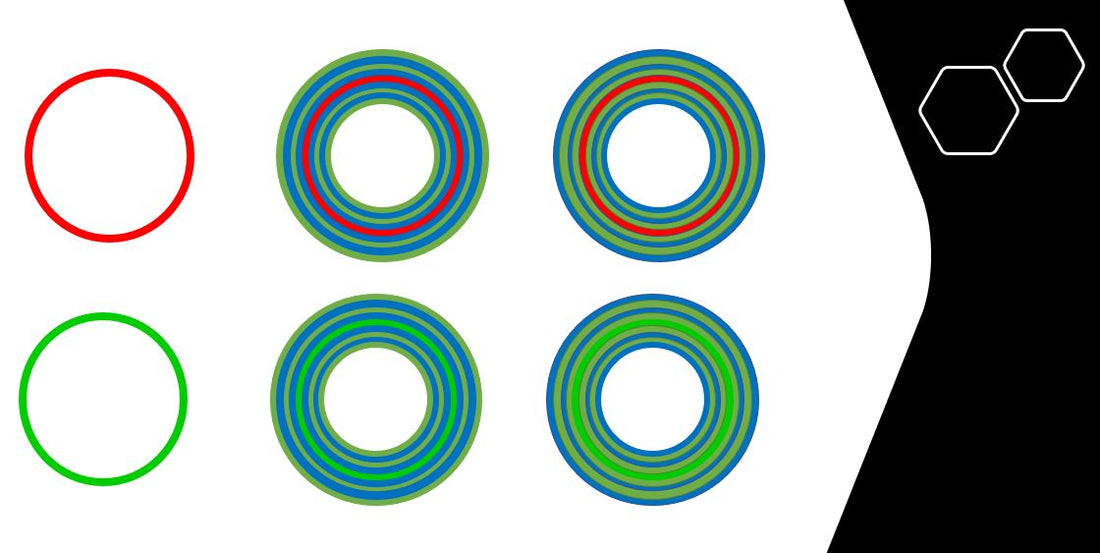Let's dive into how our human eyes perceive colour—it's quite the fascinating process!
In our eyes, we have two types of receptors, called rods and cones. While the rods are all about conveying shades of gray, the cones are the real stars of the show when it comes to colour perception. Of the three different types of cones, the first type is super into red-orange light, the second type is all about green light, and the third one is partial to blue-violet light. When one of these cones gets a little nudge, our brain goes, "Hey, there's some colour action going on!" For instance, if our green cones are getting all fired up, we see "green." And if it's the red-orange cones that are throwing the party, we're like, "Oh, it's 'red' time!" But guess what happens when both green and red-orange cones are having a blast together? We get to see "yellow." It turns out our eyes can't really tell the difference between pure spectral yellow and some combo of red and green. The same magic trick happens for colors like cyan, magenta, and all those in-between shades. And because of this biological response, our eyes can be "tricked" into seeing the full spectrum of colours just by working with three primary ones: red, green, and blue.
Now, here's the real kicker: colour isn't something that's just out there in the world; it's all happening in our heads. No wavelength of light comes pre-packaged with a colour attached. For instance, a 700 nm wavelength isn't "red" all on its own—it's our eyes and brains that give it that "red" label. When this particular wavelength hits our photoreceptors in a certain way, we experience the colour "red." It's like the sensation of "redness" is created by our senses and how they react to physical light in a chain reaction of neural events. There's no "red" hiding inside the 700 nm light, just like there's no "pain" hanging out in the stinger of a bee. We only sense redness or feel pain when something out there in the real world — a 700 nm light or a bee — gets our sensory system all fired up.

And here's the thing, our perception of colour can be easily influenced by the surrounding light conditions. For example, check out the rows of three rings in the image above — they're all the same physically, reflecting identical light to our eyes. But the magic happens when you change the surrounding colours. These three rings look different from one another because colour perception gets influenced by the surrounding lighting. This phenomenon is known as chromatic induction. So, when it comes to colours, it's not just about the light itself but also about the context in which we see it. It's all part of the marvelous interplay between our eyes and the world around us.

This photo by artist Oyvind Kolas also demonstrates how the human brain perceives colour. Although the image is actually black and white, the optical illusion tricks the human brain to recognize it as a colour image. To create this image, Kolas overlaid the black and white image with a coloured grid. When viewing the image, the colour of the lines spreads towards the surrounding region. This is termed “colour assimilation” and is what allows our brains to identify the image as coloured, with our brain transferring the perceived colours to its neighbors. The effect can be enhanced when there are areas of high contrast and the brain fills in the colours that it recognizes should be present. Try squinting for a more pronounced effect!
Happy Sewing!
Jody
